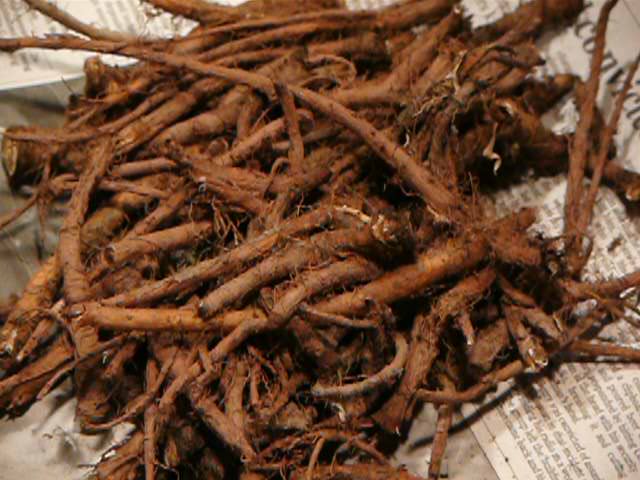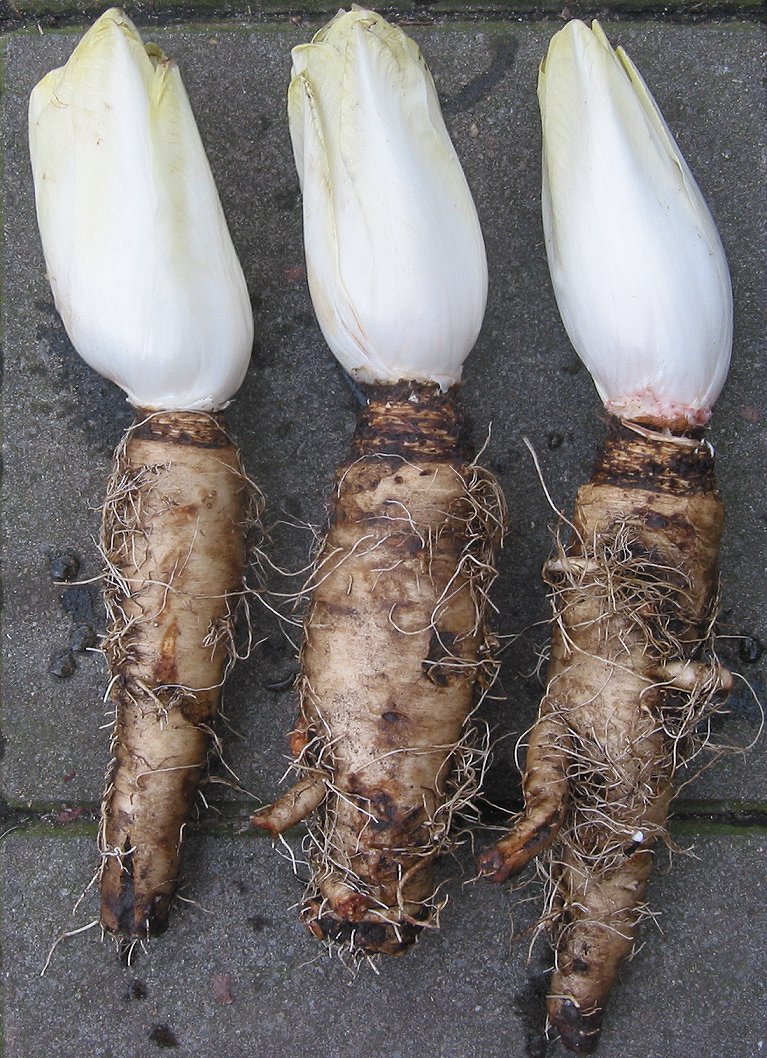|
Scopoletin
Scopoletin is a coumarin. It found in the root of plants in the genus ''Scopolia'' such as ''Scopolia carniolica'' and ''Scopolia japonica'', in chicory, in '' Artemisia scoparia'', in the roots and leaves of stinging nettle (''Urtica dioica''), in the passion flower, in '' Brunfelsia'', in ''Viburnum prunifolium'', in ''Solanum nigrum'', in ''Datura metel'', in '' Mallotus resinosus'', or and in '' Kleinhovia hospita''. It can also be found in fenugreek, vinegar, some whiskies or in dandelion coffee. A similar coumarin is scoparone. Scopoletin is highly fluorescent when dissolved in DMSO or water and is regularly used as a fluorimetric assay for the detection of hydrogen peroxide in conjunction with horseradish peroxidase. When oxidized, its fluorescence is strongly suppressed. Chemistry Biosynthesis Like most phenylpropanoids, the biosynthetic precursor to scopoletin acid is 4-coumaroyl-CoA. Scopoletin is derived from 1,2-benzopyrones which is the core structure of couma ... [...More Info...] [...Related Items...] OR: [Wikipedia] [Google] [Baidu] |
Coumarin
Coumarin () or 2''H''-chromen-2-one is an aromatic organic chemical compound with formula . Its molecule can be described as a benzene molecule with two adjacent hydrogen atoms replaced by a lactone-like chain , forming a second six-membered heterocycle that shares two carbons with the benzene ring. It can be placed in the benzopyrone chemical class and considered as a lactone. Coumarin is a colorless crystalline solid with a sweet odor resembling the scent of vanilla and a bitter taste. It is found in many plants, where it may serve as a chemical defense against predators. By inhibiting synthesis of vitamin K, a related compound is used as the prescription drug warfarin – an anticoagulant – to inhibit formation of blood clots, deep vein thrombosis, and pulmonary embolism. Etymology Coumarin is derived from ''coumarou'', the French word for the tonka bean. The word ''tonka'' for the tonka bean is taken from the Galibi (Carib) tongue spoken by natives of French G ... [...More Info...] [...Related Items...] OR: [Wikipedia] [Google] [Baidu] |
Artemisia Scoparia
''Artemisia scoparia'' is a Eurasian species in the genus ''Artemisia (plant), Artemisia'', in the Asteraceae, sunflower family. It is widespread across much of Eurasia from France to Japan, including China, India, Russia, Germany, Poland, central + southwest Asia, etc. The English common name of ''Artemisia scoparia'' is virgate wormwood, capillary wormwood, or redstem wormwood. In Mandarin Chinese it is known as yīn chén (Traditional: 茵陳) and it is an important traditional Chinese medicine, and is considered interchangeable with ''Artemisia capillaris'' for that purpose. Its pollen can be allergenic. Chemical constituents # Capillarisin #Chlorogenic acid butyl ester #6,7-Dimethylesculetin #Isosabandin #Magnolioside (isoscopoletin-β-D-glucopyranoside) #7-Methoxycoumarin #7-Methylesculetin #Sabandin A # Sabandin B # Scoparone (6,7-dimethoxycoumarin) #Scopoletin #beta-Sitosterol, β-Sitosterol #Capillin References Artemisia (genus), scoparia Plants used in trad ... [...More Info...] [...Related Items...] OR: [Wikipedia] [Google] [Baidu] |
Dandelion Coffee
Dandelion 'coffee' (also dandelion tea) is a tisane made from the root of the dandelion plant. The roasted dandelion root pieces and the beverage have some resemblance to coffee in appearance and taste, and it is thus commonly considered a coffee substitute. Dandelion root is used for both medicinal and culinary purposes and is thought to be a detoxifying herb. History The usage of the dandelion plant dates back to the ancient Egyptians, Greeks and Romans. Additionally, for over a thousand years, Chinese traditional medicine has been known to incorporate the plant. Susanna Moodie explained how to prepare dandelion 'coffee' in her memoir of living in Canada, ''Roughing it in the Bush'' (1852), where she mentions that she had heard of it from an article published in the 1830s in ''New York Albion'' by a certain Dr. Harrison. Dandelion 'coffee' was later mentioned in a '' Harpers New Monthly Magazine'' story in 1886. In 1919, dandelion root was noted as a source of cheap 'coffee' ... [...More Info...] [...Related Items...] OR: [Wikipedia] [Google] [Baidu] |
Mallotus Resinosus
''Mallotus resinosus'', the resinous kamala , is a species of 12m tall shrub, evergreen plant in the family Euphorbiaceae. It is native to India, Sri Lanka to New Guinea and Australia. The plant is known as "கருவாளிச்சீ / karuvalichchi" by Tamil people. Leaves Elliptic to obovate; base attenuate; margin serrate. Flowers Inflorescence - present, where male flowers are clustered and unbranched. Female flowers are also unbranched, but with 3 locules and few short spines. Fruits Globose seeded capsule. Chemistry Scientists found a simple coumarin, called Scopoletin from the root extraction of resinous kamala. It was identified as the active principle responsible for DNA cleavage activity during the extraction process. The chemical was once thought that it was only found within plants of the genus, ''Scolopia ''Scolopia'' is an Old World genus of plants in the family Salicaceae. Species include: * ''Scolopia braunii'' ( Klotzsch) & Sleumer - an Australian ... [...More Info...] [...Related Items...] OR: [Wikipedia] [Google] [Baidu] |
Scopoletin Glucosyltransferase
In enzymology, a scopoletin glucosyltransferase () is an enzyme that catalysis, catalyzes the chemical reaction :UDP-glucose + scopoletin \rightleftharpoons UDP + scopolin Thus, the two substrate (biochemistry), substrates of this enzyme are UDP-glucose and scopoletin, whereas its two product (chemistry), products are uridine diphosphate, UDP and scopolin. This enzyme belongs to the family of glycosyltransferases, specifically the hexosyltransferases. The List of enzymes, systematic name of this enzyme class is UDP-glucose:scopoletin O-beta-D-glucosyltransferase. Other names in common use include uridine diphosphoglucose-scopoletin glucosyltransferase, UDP-glucose:scopoletin glucosyltransferase, and SGTase. This enzyme participates in phenylpropanoid biosynthesis. References * * EC 2.4.1 Enzymes of unknown structure Coumarins metabolism {{2.4-enzyme-stub ... [...More Info...] [...Related Items...] OR: [Wikipedia] [Google] [Baidu] |
Chicory
Common chicory ('' Cichorium intybus'') is a somewhat woody, perennial herbaceous plant of the family Asteraceae, usually with bright blue flowers, rarely white or pink. Native to the Old World, it has been introduced to North America and Australia. Many varieties are cultivated for salad leaves, chicons ( blanched buds), or roots (var. ''sativum''), which are baked, ground, and used as a coffee substitute and food additive. In the 21st century, inulin, an extract from chicory root, has been used in food manufacturing as a sweetener and source of dietary fiber. Chicory is grown as a forage crop for livestock. "Chicory" is also the common name in the United States for curly endive ('' Cichorium endivia''); these two closely related species are often confused. Description When flowering, chicory has a tough, grooved, and more or less hairy stem. It can grow to tall. The leaves are stalked, lanceolate and unlobed; they range from in length (smallest near the top) and wide. The ... [...More Info...] [...Related Items...] OR: [Wikipedia] [Google] [Baidu] |
Scoparone
Scoparone is a natural organic compound with the molecular formula C11H10O4. It is found in the Chinese herb '' Artemisia scoparia'' and has been studied for its potential pharmacological properties including immunosuppression Immunosuppression is a reduction of the activation or efficacy of the immune system. Some portions of the immune system itself have immunosuppressive effects on other parts of the immune system, and immunosuppression may occur as an adverse react ... and vasorelaxation. References Coumarins Hydroxyquinol ethers {{organic-compound-stub ... [...More Info...] [...Related Items...] OR: [Wikipedia] [Google] [Baidu] |
Enzyme
Enzymes () are proteins that act as biological catalysts by accelerating chemical reactions. The molecules upon which enzymes may act are called substrates, and the enzyme converts the substrates into different molecules known as products. Almost all metabolic processes in the cell need enzyme catalysis in order to occur at rates fast enough to sustain life. Metabolic pathways depend upon enzymes to catalyze individual steps. The study of enzymes is called ''enzymology'' and the field of pseudoenzyme analysis recognizes that during evolution, some enzymes have lost the ability to carry out biological catalysis, which is often reflected in their amino acid sequences and unusual 'pseudocatalytic' properties. Enzymes are known to catalyze more than 5,000 biochemical reaction types. Other biocatalysts are catalytic RNA molecules, called ribozymes. Enzymes' specificity comes from their unique three-dimensional structures. Like all catalysts, enzymes increase the reaction ra ... [...More Info...] [...Related Items...] OR: [Wikipedia] [Google] [Baidu] |
Glucoside
A glucoside is a glycoside that is derived from glucose. Glucosides are common in plants, but rare in animals. Glucose is produced when a glucoside is hydrolysed by purely chemical means, or decomposed by fermentation or enzymes. The name was originally given to plant products of this nature, in which the other part of the molecule was, in the greater number of cases, an aromatic aldehydic or phenolic compound (exceptions are Jinigrin and Jalapin or Scammonin). It has now been extended to include synthetic ethers, such as those obtained by acting on alcoholic glucose solutions with hydrochloric acid, and also the polysaccharoses, e.g. cane sugar, which appear to be ethers also. Although glucose is the most common sugar present in glucosides, many are known which yield rhamnose or iso-dulcite; these may be termed pentosides. Much attention has been given to the non-sugar parts (aglyca) of the molecules; the constitutions of many have been determined, and the compounds synthesi ... [...More Info...] [...Related Items...] OR: [Wikipedia] [Google] [Baidu] |
Scopolin
Scopolin is a glucoside of scopoletin formed by the action of the enzyme scopoletin glucosyltransferase. References Bibliography * * O-methylated coumarins Phenol glucosides {{aromatic-stub ... [...More Info...] [...Related Items...] OR: [Wikipedia] [Google] [Baidu] |
Wikipedia Pathway Copy
Wikipedia is a multilingual free online encyclopedia written and maintained by a community of volunteers, known as Wikipedians, through open collaboration and using a wiki-based editing system. Wikipedia is the largest and most-read reference work in history. It is consistently one of the 10 most popular websites ranked by Similarweb and formerly Alexa; Wikipedia was ranked the 5th most popular site in the world. It is hosted by the Wikimedia Foundation, an American non-profit organization funded mainly through donations. Wikipedia was launched by Jimmy Wales and Larry Sanger on January 15, 2001. Sanger coined its name as a blend of ''wiki'' and ''encyclopedia''. Wales was influenced by the "spontaneous order" ideas associated with Friedrich Hayek and the Austrian School of economics after being exposed to these ideas by the libertarian economist Mark Thornton. Initially available only in English, versions in other languages were quickly developed. Its combined editions com ... [...More Info...] [...Related Items...] OR: [Wikipedia] [Google] [Baidu] |
Arabidopsis Thaliana
''Arabidopsis thaliana'', the thale cress, mouse-ear cress or arabidopsis, is a small flowering plant native to Eurasia and Africa. ''A. thaliana'' is considered a weed; it is found along the shoulders of roads and in disturbed land. A winter annual with a relatively short lifecycle, ''A. thaliana'' is a popular model organism in plant biology and genetics. For a complex multicellular eukaryote, ''A. thaliana'' has a relatively small genome around 135 mega base pairs. It was the first plant to have its genome sequenced, and is a popular tool for understanding the molecular biology of many plant traits, including flower development and light sensing. Description ''Arabidopsis thaliana'' is an annual (rarely biennial) plant, usually growing to 20–25 cm tall. The leaves form a rosette at the base of the plant, with a few leaves also on the flowering stem. The basal leaves are green to slightly purplish in color, 1.5–5 cm long, and 2–10 mm broad, with an ... [...More Info...] [...Related Items...] OR: [Wikipedia] [Google] [Baidu] |




